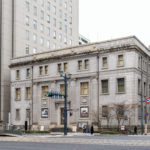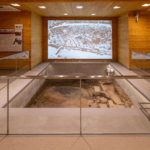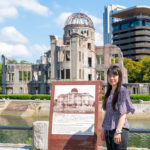Q5 How severe were the economic losses following the atomic bombing and how were industries and the economy restored?
 Economic loss
Economic loss
Economic loss refers to the physical property lost (e.g. buildings, machines, equipment, roads, and bridges) and financial assets lost (e.g. cash, deposits, savings, stocks, and securities). Unfortunately, estimating the value of the financial assets that were lost is practically impossible as crucial documents and books were incinerated. However, there are ways to estimate the value of the physical property that was lost.
For example, a survey conducted by the City of Hiroshima revealed that 70,147 out of a total 76,327 buildings including houses, stores, factories, and schools had been totally or partially incinerated or destroyed. This number included 64,000 private homes and 600 factories, allowing us to estimate the amount of damaged furniture, private property, and plant facilities.
According to the Municipal Handbook 1946 edition (1947) published by the City of Hiroshima, the total amount of damage in six categories (private homes, buildings, bridges, roads, private property, and communication facilities) was estimated to have been 763,430,000 yen (at the time). On the other hand, a report published by the Economic Stabilization Board in 1949 estimates the total property damage in Hiroshima City was 695,000,000 yen (at the time). (For reference, the exchange rates for Japanese yen to U.S. dollar was 50 yen/dollar in 1947 (military exchange rate) and 360 yen/dollar in 1949.)
More detailed data on the total losses can be found in Hiroshima, Nagasaki no Genbaku Saigai (1979), jointly edited by Hiroshima City and Nagasaki City. It estimated there was 884,100,000 yen (value as of August 1945) lost. This amount was equivalent to the annual income of 850,000 average Japanese persons at that time—since Japan’s per-capita income in 1944 was 1,044 yen.
Reconstruction of industrial economy
The reconstruction of Hiroshima’s industrial economy was driven by a variety of factors. It can be noted that most of the factories damaged by the A-bombing were small, with less than five employees, and located in the heart of the city. Many largescale factories survived the devastation, and the workforce of Hiroshima Prefecture remained almost the same level. One more major factor for the reconstruction was government led projects. In September 1949, Hiroshima City announced a five-year plan for reconstruction of its industry (draft), which set a goal of increasing
One more major factor for the reconstruction was government led projects. In September 1949, Hiroshima City announced a five-year plan for reconstruction of its industry (draft), which set a goal of increasing
industrial production by 3.3 times its fiscal year 1948 level by fiscal year 1953; and this goal was almost achieved. Special procurement demands during the Korean War, which broke out in June 1950, also contributed to increased production of automobiles and canned foods and laid the foundation for the economic growth that would occur in subsequent decades.
Inquiries about this page
Hiroshima Prefectural Office
Street address:10-52, Motomachi, Naka-ku, Hiroshima-shi, Hiroshima-ken, 730-8511
Tel:+81-(0)82-228-2111








